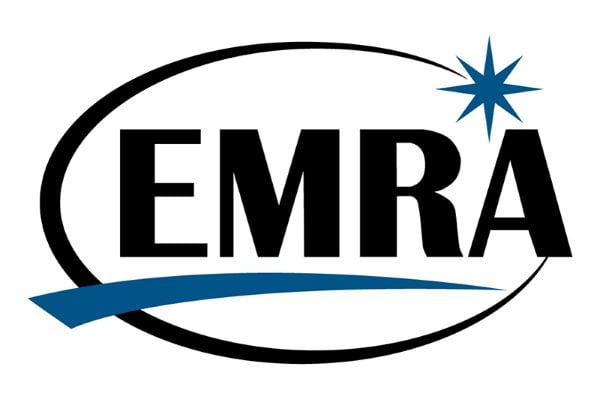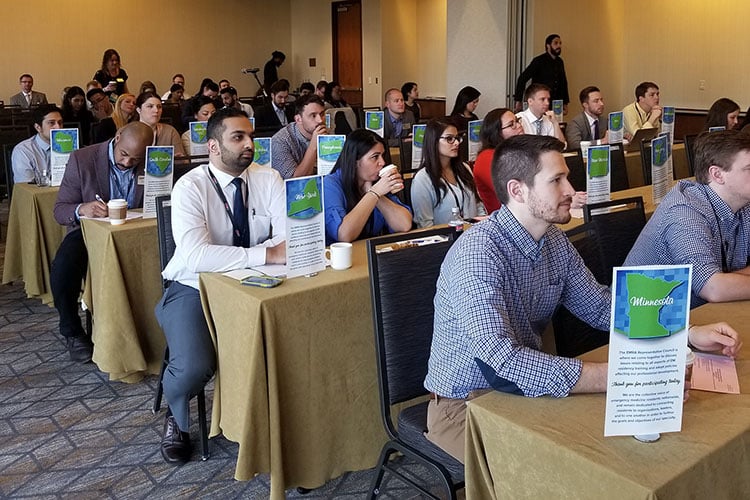Secondary Syphilis with Hepatic Involvement – A Clinical Perspective
Olivia Voltaggio, MS, OMS-III
Rocky Vista University College of Osteopathic Medicine – Southern Utah
EMRA MSC Editor
Secondary Syphilis with Hepatic Involvement – A Clinical Perspective
Patient Presentation
A 29-year-old female presented with a five-day history of a pruritic rash involving the chest, upper extremities, palms, and back, sparing the lower extremities. She described the rash as having an associated pins-and-needles sensation. Additionally, she reported right upper quadrant (RUQ) abdominal pain. Physical examination revealed scleral icterus, jaundice, posterior cervical and inguinal lymphadenopathy, and RUQ tenderness without rebound or guarding. Her vital signs included a heart rate of 119 bpm and temperature of 99.1°F. Laboratory workup revealed a cholestatic pattern of liver injury: alkaline phosphatase of 1140 U/L, AST 91 U/L, ALT 122 U/L, and total bilirubin of 5.9 mg/dL. White blood cell differential showed 73.3% neutrophils and 14.8% lymphocytes. Serologies for hepatitis B and C, HIV, gonorrhea, chlamydia, and trichomonas were negative. VDRL was positive, confirming a diagnosis of secondary syphilis with acute hepatitis. She was treated with 2.4 million units of intramuscular penicillin G and admitted to the hospital for further observation and treatment.
Review
Secondary syphilis is a systemic illness resulting from hematogenous dissemination of Treponema pallidum, typically occurring weeks to months after initial infection. It manifests with a diverse array of signs and symptoms, the most classic being a generalized maculopapular rash that may involve the trunk, extremities, and sometimes palms and soles. However, secondary syphilis can also involve multiple organ systems, including the liver, leading to a condition termed syphilitic hepatitis—a rare but important diagnosis to consider when faced with abnormal liver tests in the appropriate clinical context. ¹
Syphilitic hepatitis is thought to occur via two potential mechanisms: direct infiltration of spirochetes into hepatic tissue or immune-mediated hepatic inflammation. Histopathologic examination, when pursued, may show nonspecific features such as portal inflammation with plasma cell infiltrates, granulomas, or Kupffer cell hyperplasia. ² Importantly, a liver biopsy is often unnecessary if clinical and serologic findings point clearly to syphilitic etiology. Instead, diagnosis is based on compatible symptoms, abnormal liver enzymes—most notably a disproportionately elevated alkaline phosphatase—and serologic confirmation of syphilis.
A comprehensive literature review by Mullick et al. identified over 80 cases of syphilitic hepatitis, most of which occurred during secondary syphilis. ³ In these cases, patients commonly presented with constitutional symptoms, rash, and hepatobiliary complaints. The biochemical hallmark is a cholestatic pattern, as seen in our patient. Hyperbilirubinemia is often present, though typically not severe. Importantly, standard treatment with penicillin G leads to resolution of hepatic abnormalities in many cases.
Current Centers for Disease Control and Prevention (CDC) guidelines recommend a single intramuscular dose of 2.4 million units of penicillin G for the treatment of early syphilis, including primary, secondary, and early latent stages. ⁴ This regimen remains highly effective and is supported by decades of clinical experience. A follow-up non-treponemal test (e.g., VDRL or RPR) is advised to assess response to treatment.
Differential diagnosis of hepatic dysfunction in young adults is broad, including viral hepatitis (A, B, C, EBV, CMV), autoimmune hepatitis, and drug-induced liver injury. However, the co-occurrence of rash, lymphadenopathy, and cholestatic enzyme elevation should prompt consideration of syphilis, particularly in individuals with potential risk factors or a history of sexually transmitted infections. Studies suggest that syphilitic hepatitis is underdiagnosed due to its subtle presentation and the tendency to overlook syphilis serology in atypical cases. ⁵
Although syphilitic hepatitis is rare, its recognition is critical because it is highly treatable and can mimic other hepatic and systemic diseases. Increasing awareness among clinicians—particularly in patients with unexplained rash, lymphadenopathy, and liver enzyme abnormalities—may improve diagnostic accuracy and reduce unnecessary testing or invasive procedures.
Conclusion
This case underscores the importance of maintaining a broad differential diagnosis when evaluating abnormal liver function, especially in young patients with systemic symptoms and cutaneous findings. Syphilitic hepatitis, though uncommon, is a reversible cause of liver injury that responds well to standard antibiotic therapy. Clinicians should incorporate syphilis screening early in the workup of unexplained hepatitis, particularly when supported by clinical context. Evidence-based guidelines continue to affirm penicillin G as first-line therapy, offering rapid symptom resolution and biochemical improvement in cases of secondary syphilis with hepatic involvement.
References:
- Ghanem KG. Syphilis. N Engl J Med. 2020;382(9):845-854. doi:10.1056/NEJMra1901593
- French P. Syphilis. BMJ. 2007;334(7585):143-147. doi:10.1136/bmj.39085.518148.BE
- Mullick CJ, Liappis AP, Benator DA, Roberts AD, Parenti DM. Syphilitic hepatitis in HIV-infected patients: a report of 7 cases and review of the literature. Clin Infect Dis. 2004;39(10):e100-e105. doi:10.1086/425537
- Workowski KA, Bachmann LH, Chan PA, et al. Sexually Transmitted Infections Treatment Guidelines, 2021. MMWR Recomm Rep. 2021;70(4):1-187.
- De Medina M, Nazer LH, Guerra FA. Hepatic manifestations of syphilis: a forgotten cause of liver injury. Ann Hepatol. 2017;16(5):794-798. doi:10.5604/01.3001.0010.2767
Related Content

Aug 25, 2017
Your Home
The Emergency Medicine Residents' Association EMRA is the voice of emergency medicine physicians-in-training and the future of our specialty and the largest and oldest independent resident organization in the world. EMRA was founded in 1974 and today has a membership over 18,000 residents, medical students, and alumni.





